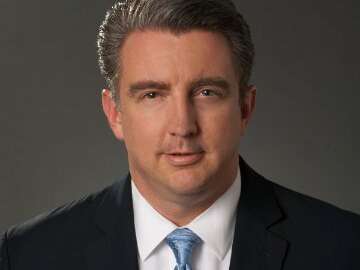

The First Responder Network Authority issued its Request for Proposals for the nationwide public safety broadband network this week. The network will be the first...
Whether it’s sharing images during a national emergency, a building’s blueprints to firefighters or the criminal history of a driver behind a certain license plate, the ability to send and receive information during an emergency — and do it in a way that first responders across the country can access — is an invaluable resource in need of access.
But this week, the minds behind the First Responder Network Authority (FirstNet) took a major step toward reaching that goal when it issued a Request for Proposals for the nationwide public safety broadband network to “modernize communications for first responders and other public safety personnel across the U.S.”
“First responders are embracing the use of data more than ever,” FirstNet President TJ Kennedy told the Federal Drive with Tom Temin. “Being able to share photos, being able to share those building plans, being able to send information related to a license plate, or a criminal history on a particular driver pulled over on the side of the road. These are all things that will be transmitted across this kind of network and [first responders will] also have the ability to share video for lifesaving needs of public safety.”
The congressionally mandated network plans to use $7 billion to build a 700 MHz spectrum platform that will put an end to decades-long interoperability and communications challenges.
This makes FirstNet the first high-speed, nationwide wireless broadband network dedicated to public safety. Although FirstNet is housed in the Department of Commerce, it operates as an independent entity and receives its funding directly from Congress.
“We worked with public safety across the country and we’ve done consultations in states and territories all across the country to receive feedback,” Kennedy said. “That has been built into this RFP. We wanted to make sure these objectives meet the needs of all public safety; in different states, different territories, different needs for police, fire and emergency medical services.”
Kennedy said the current plan is to have the spectrum clear and ready to go by the contract award time. Questions and capability statements are due Feb. 12 through March 17, with RFPs due April 29.
The contract structure would likely be five-year renewals leading up to a 20-year time frame, Kennedy said. That allows for an assurance on good performance but also long-term certainty for return on investment.
Kennedy said he expects proposals to be backed by group efforts since the RFP is structured as “one nationwide approach.”
“We would expect folks to team together so if you have hardware providers and software providers and other folks that are looking at covered leasing agreements to provide network services, that they would all come together as a team to go ahead and put a proposal in together,” Kennedy said. “It’s very likely to be coalitions that come together to do that, or some large companies that bring some key teammates to the table.”
Kennedy said the RFP asks for offers “that will allow us to meet the 16 key objectives of public safety and provide broadband services that include video, voice and data.”
Those objectives, according to the RFP, range from financial sustainability to cybersecurity to service capacity and life cycle innovation.
“[We’re] looking to make sure we are meeting the needs of cybersecurity for public safety,” Kennedy said. “These kinds of objectives across the board will entail, at the end of the day, having a critical mission network that provides the kind of broadband services that police officers, firefighters, paramedics and EMTs will utilize every single day in their daily operations as well big emergencies.”
Kennedy said FirstNet is using international commercial standards from the Third Generation Partnership Project (3GPP), which is what most commercial cellular networks use today.
“There will actually be the ability for commercial users through other providers to be on the network, but they will always have the ability for public safety to prioritize their traffic and preempt any traffic in a … national emergency, to have a seamless public safety experience on that network,” Kennedy said. “That’s something that has been missing. I think we’ll really give the experience to public safety that they’re looking for through that priority and preemption.”
Copyright © 2025 Federal News Network. All rights reserved. This website is not intended for users located within the European Economic Area.


